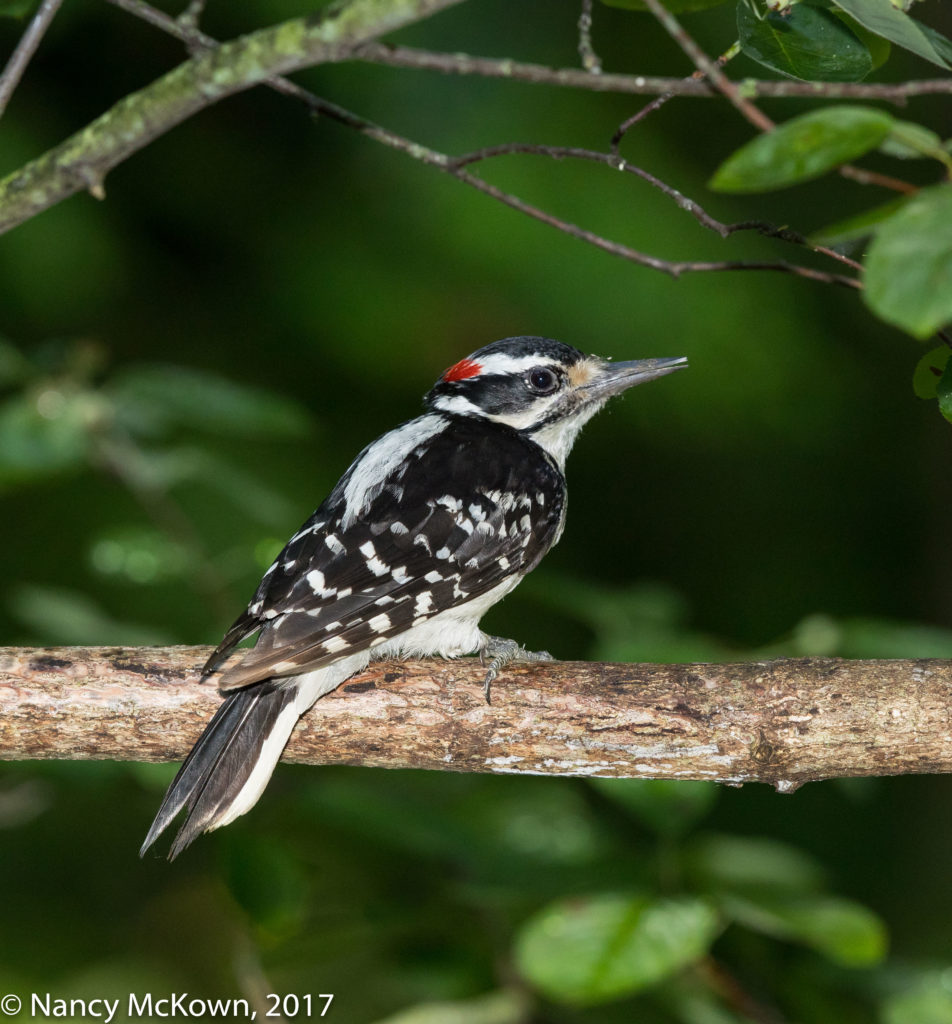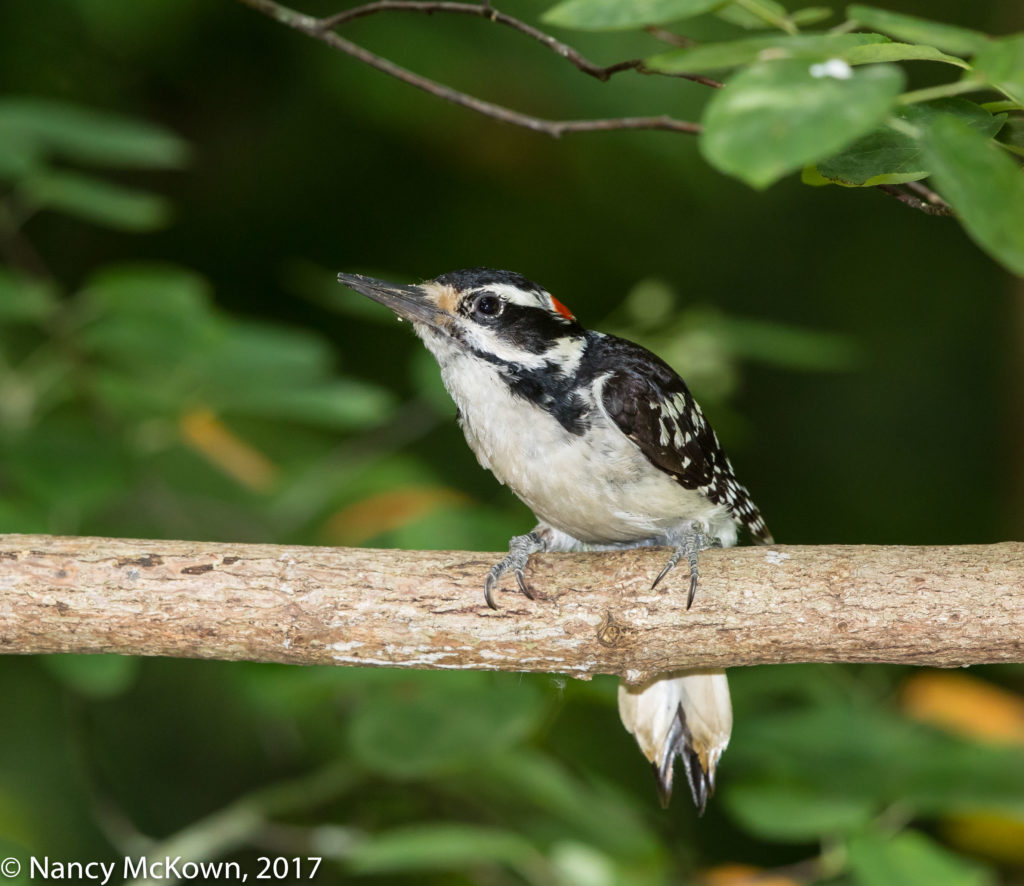Photographing Hairy Woodpeckers
Most years we have the good fortune of seeing many sturdy, winter-hardy Downy and Red Bellied Woodpeckers in our yard. But Hairy Woodpeckers….just a few.
The Hairy and Downy Woodpeckers are examples of convergent evolution –in that both species live in similar habitats and have evolved to be almost identical in shape and color, despite not being closely related biologically. I’ve learned to tell the Downy and Hairy Woodpeckers apart by first checking the length of the bird’s beak and then overall bird size. (The Hairy is the larger of the two.) The beak of the Downy is dainty and better “fits” his face. The drilling beak of the Hairy Woodpecker is more formidable- as long as his face – and appears oversized. Predictably, both display typical woodpecker-ish behavior…. probing into tree cavities, scooching up and down tree trunks and clinging to the suet feeder. (NOTE: Sometimes a young fledging Hairy will look as though he has a smaller, undersized beak, causing me to wonder about ID.)

About the Size of a Robin
A Little Brown Stain Is Evident
On the Outer Wing and Tail Feathers.
No Doubt from Being
Constantly Dragged Across
The Bark of Trees.
ISO1250; f/9; 1/250 Second
Nature Photographers
I learn a lot about birds and photography by exploring the web. NOTE: I don’t have a lot of friends who are nature photographers.
Since I started this website 4+ years ago, I have grown to be a better bird photographer and a better writer. I have more knowledge and more skill. I am less of a pretender.

Red splotch at the Rear
of His Crown.
ISO1250; f/9; 1/250 Second
Sense of Exclusivity
I’m always watching photographers…. looking to see what gadgetry is around their necks. I can be a little dismissive if I notice an unglamorous “consumer market” camera, even though I know that brand names, high prices and the air of professionalism do not an artist make. For some reason, I simply pay more attention to individuals carrying “professional grade” cameras. It is as if all those superior imaging components and high prices allow me to elevate the photographer on to an artistic pedestal, even though her skill level may not allow her to venture past the camera’s auto settings. Snob appeal I suppose.
Few Barriers to Entry
Modern dSLR cameras are not a study in simplicity, but that doesn’t matter. The imaging technology contained within these cameras is geared to eliminate or at least reduce barriers to becoming a photographer, so much so that a lot of people don’t think of nature photography as an art or a skill. Almost anyone with a dSLR camera can present herself as a pro. Understanding the fundamentals of composition and exposure is simply not necessary. Just show up, display a little panache, take hundreds of photos (professional quality is to a large extent about numbers) and let the camera figure out the details. No mastery necessary.
Divergent Paths
Whatever you own, all gear is limiting in some way. Very different camera equipment, methods, and motivations lead photographers onto divergent paths. The skill and talent of the photographer, not the quality of the equipment, will ultimately be the key differentiator between photographer and dabbler.
“The Camera is an Instrument that Teaches People How to See Without a Camera.”
–Dorothea Lange








